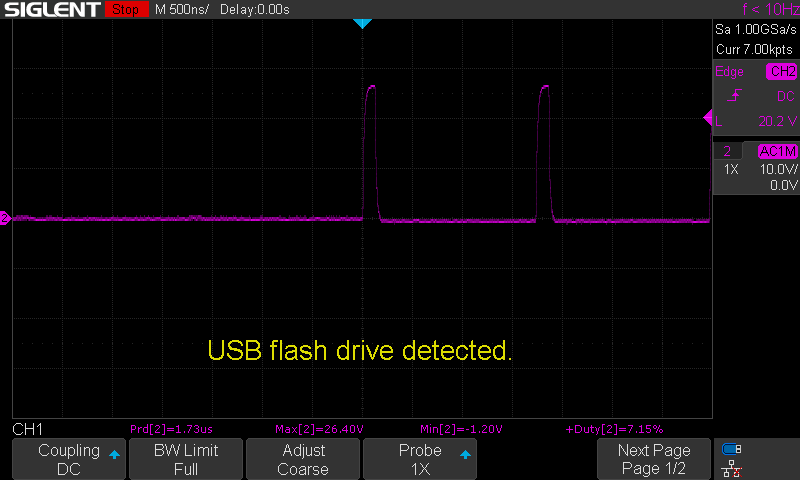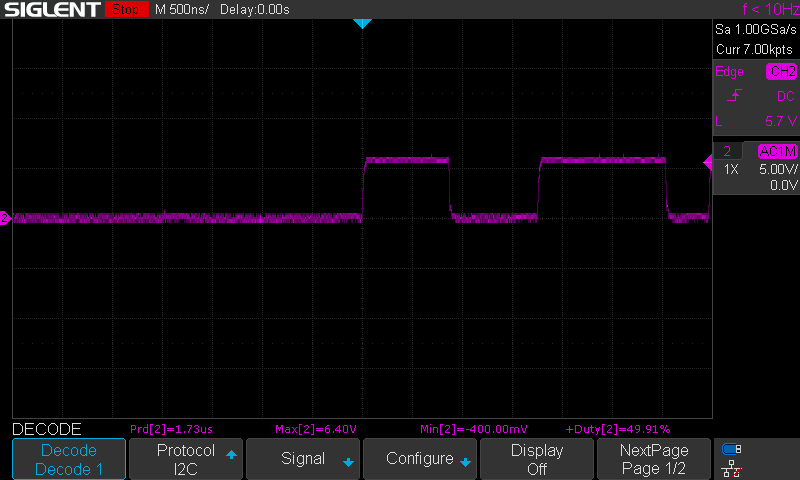Hi TI,
I have been trying to build a basic BQ24640 charger for a single 2.7V 330F supercap. I am trying to reach the advertised 10A charging current. My circuit replicates the circuit from the eval board https://www.ti.com/tool/BQ24640EVM. The experiment uses the power mosfets SIR460DP (https://www.mouser.com/datasheet/2/427/sir460dp-93818.pdf), a high current 3.3uH inductor, and otherwise follows the eval board.
As I am debugging I noticed that the gate source voltage PWM on the mosfets swings between 2.1V for high and 0V for low. The frequency is correct and the REGN pin shows 6V. It is my understanding, that the drivers should be driving with 6V and not 2V? I am wondering where the problem might be? Am I correct in seeing this as the problem for why the circuit never reaches 10A?
Best, Julian




